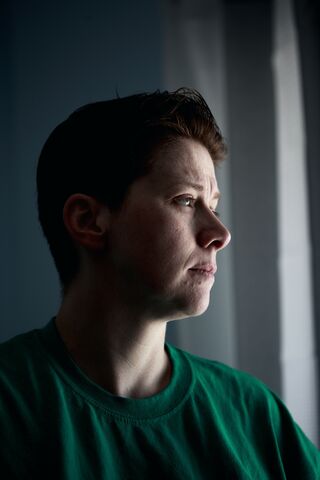Depression
Where Despair and Hope Touch
Finding inner resources in times of crisis.
Posted November 1, 2020

The fall is quick and winter is predicted to be severe.
The pandemic has renewed its hold on our world, threatening to further cripple our economy, continue to isolate and inconvenience us, and exponentially steal the lives of our fellow human beings. Forecasts that paint a rosier picture appear firmly rooted in the politics of short-term denial and the immediate personal gain of its promoters.
If that is not enough, the environmental crisis appears to have arrived at the point of no return, where damage has been done with repercussions that can no longer be avoided. The optimistic view is that with monumental effort, we may still be able to reduce the degree and duration of our suffering.
In these last days before the U.S. presidential election of 2020, many people on both ends of our polarized and passionate political divide are anticipating catastrophic results ranging from the end of democracy to a civil war. For some, these upheavals are inevitable regardless of the election’s outcome.
Waves of dread rise and fall among us. Those who are already struggling with depression, anxiety or other mental health conditions might feel particularly impacted. Many more of us might notice that our general sense of hope has declined and worry that we are heading for a catastrophic collapse into despair. How much more of this can we take?
In times when we feel overwhelmed, hope often plays the role of the enemy. As we secure and harden our defenses against harmful chaos, we will actively look to “disrupt any perception of life as a safe harbor” in order to preserve “vigilant readiness for disaster.” (Bromberg 1998) A positive perspective may be cast as seductive fantasy and a call to gratitude and mindfulness heard as little more than passive naval gazing. Feeling vulnerable, we resist being lulled into lowering our guard, committing instead to maintain our stressful watch in full expectation of disaster.
Saint Thomas Aquinas, writing of hope as a Christian virtue, specified “that hope is born from the desire for something good that is ‘difficult but possible to attain.’” (Wadell, P.J.; American Magazine Nov 2016)
I take comfort that this great saint sees hope as a desire for something reasonable. Hope is not baseless. It does not demand a miracle.
Hope is grounded. It is realistic. Hope finds its transformative powers in the reality of our own goodness.
When we take a deep, conscious breath, we directly experience how capable we are of coping. With each breath, our body and brain are reassured that we are going to be okay. It reminds us of the essential gift of our own existence.
When we connect with other people, family, friends, colleagues, or even strangers, we rediscover that, for all our aloneness, we are not alone: that relationships coexist with stress and are means by which we not only survive times such as these but are the reasons we thrive.
When we open our senses and notice nature, music, art, and the multitude of simple events and sensations available to us every minute of every day, allowing for the possibility of gratitude, we are reminded that even the most horrendous crisis never undoes the goodness of this life and world.
Andrew Solomon in his book on depression, The Noonday Demon (2001), is as unflinching in describing the devastation that depression wrecks upon the human soul (including his own), as he is resolute in upholding the necessity and reasonableness of hope. He writes:
“The opposite of depression is not happiness but vitality. And my life, as I write this, is vital, even when sad… Almost every day I feel momentary flashes of hopelessness and wonder every time whether I am slipping. For a petrifying instant here and there, a lightning-quick flash, I want a car to run me over and I have to grit my teeth to stay on the sidewalk until the light turns green…I hate those feelings, but I know they have driven me to look deeper at life, to find and cling to reasons for living.”

It is often our hardships that drive us out of our comfort zone to an intersection where despair and hope touch. Despair is a path of collapse, surrender, passivity, and acceptance of the unrealistic but loud assertion that this is the only truth available to us. Hope is often quiet and obscure, but reveals itself when we take even one step towards it, unfolding a broader vision, one that includes that suffering which despair isolates, but balances it with the breath, color, texture and taste of joy. Hope reveals itself as we engage it by actively seeing, hearing, tasting and touching what is, has always been, and will forever be available to us.
In these days of political, environmental, and health crises, we would all do well to visit and spend time with hope. Where is it? It has not moved. Hope resides in our lives, minds, and hearts. Access is as simple as a look out a window, a message to a friend, a hand held, a prayer offered, a meditative breath, a walk, run or ride, a reminiscence, the smell of fresh bread, the taste of cool water, and holding in your arms, your mind, or your heart those people who you love and who love you.
As fall falls and winter sinks in, spring is, and always remains, present.
References
Bromberg, P.M. (1998). Standing in the Spaces: Essays on clinical process, trauma & dissociation. Hillsdale, NJ: The Analytic Press.
Wadell, P.J. (2016). Hope: The forgotten virtue of our time. America Magazine, Nov 2016 issue.
Solomon, A. (2001) The Noonday Demon: An atlas of depression. New York, NY: Scribner.
Korb, A. (2015) The Upward Spiral: Using neuroscience to reverse the course of depression one small change at a time. Oakland, CA: New Harbinger Books.




